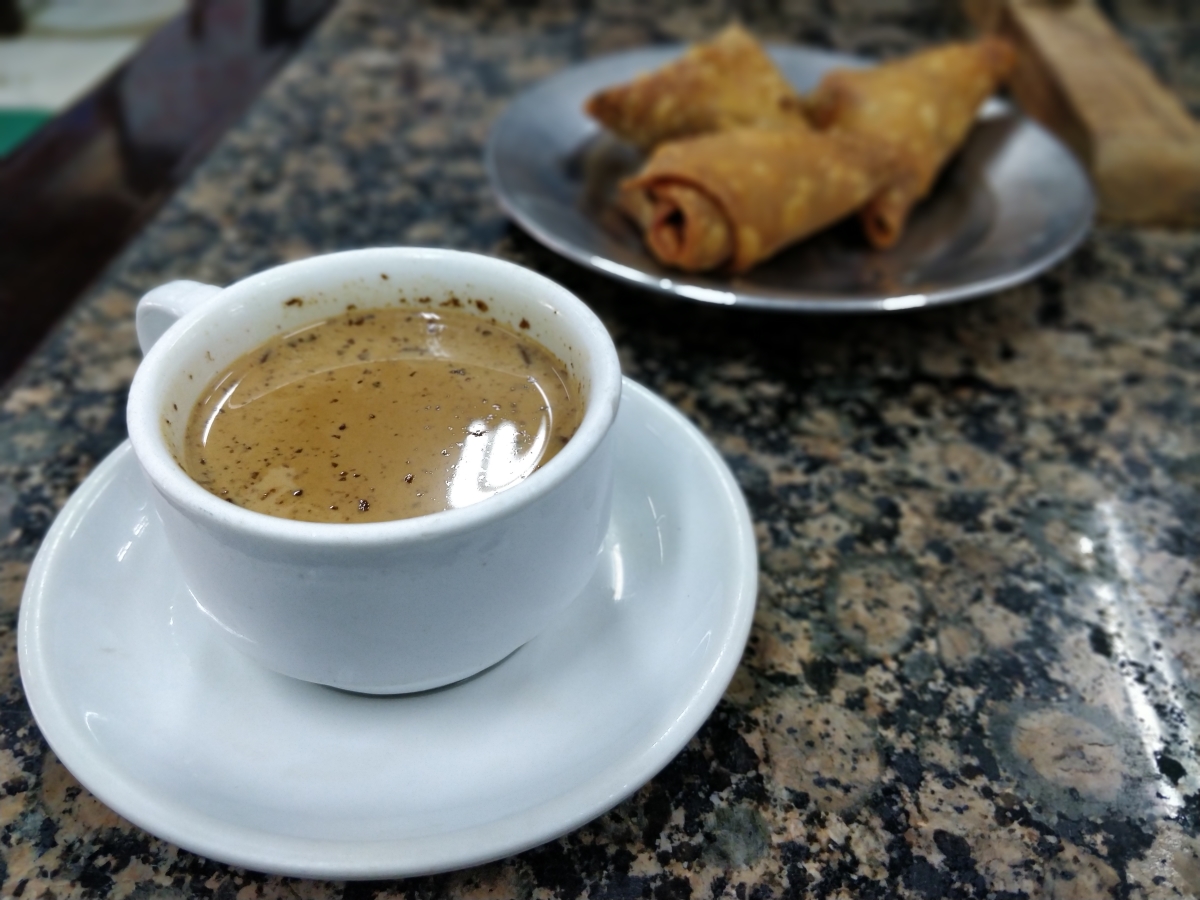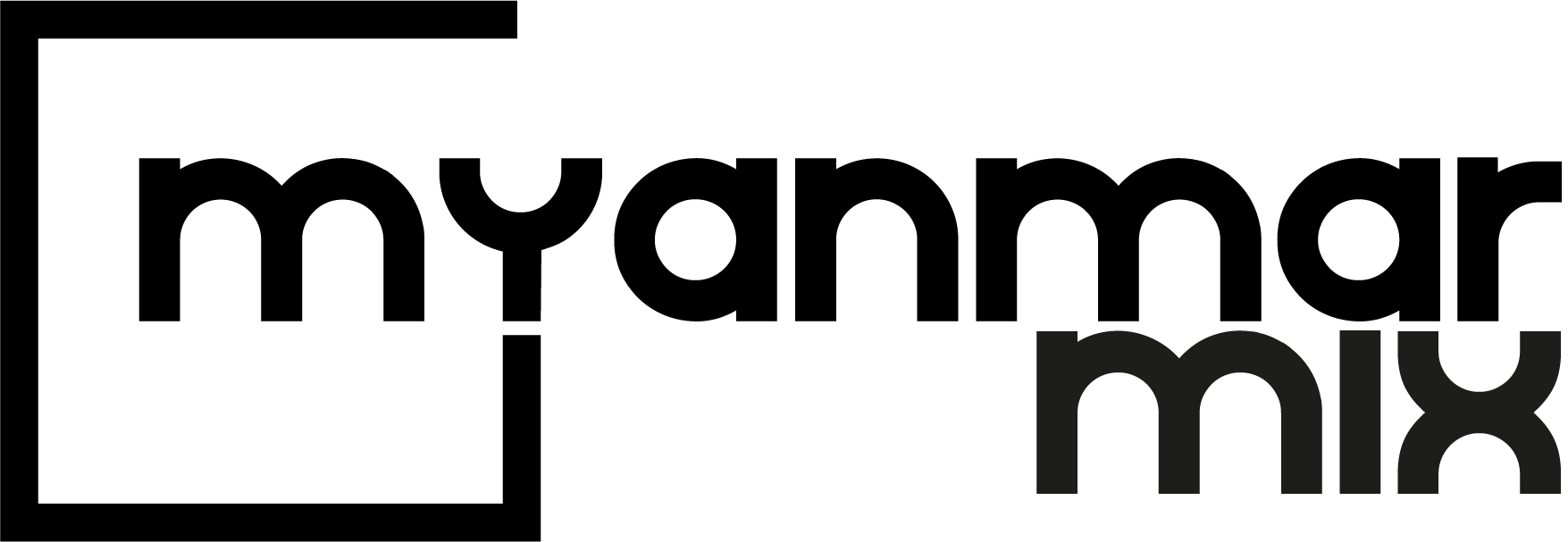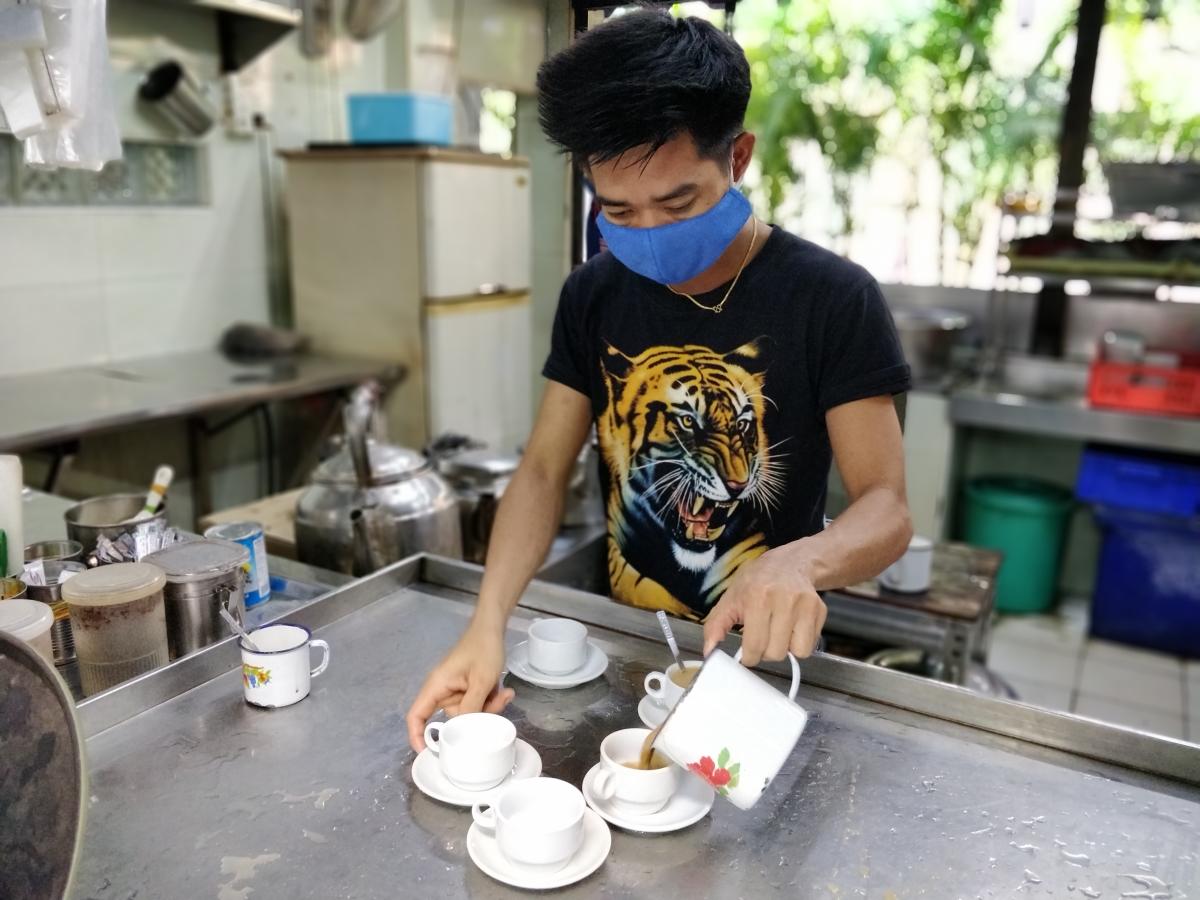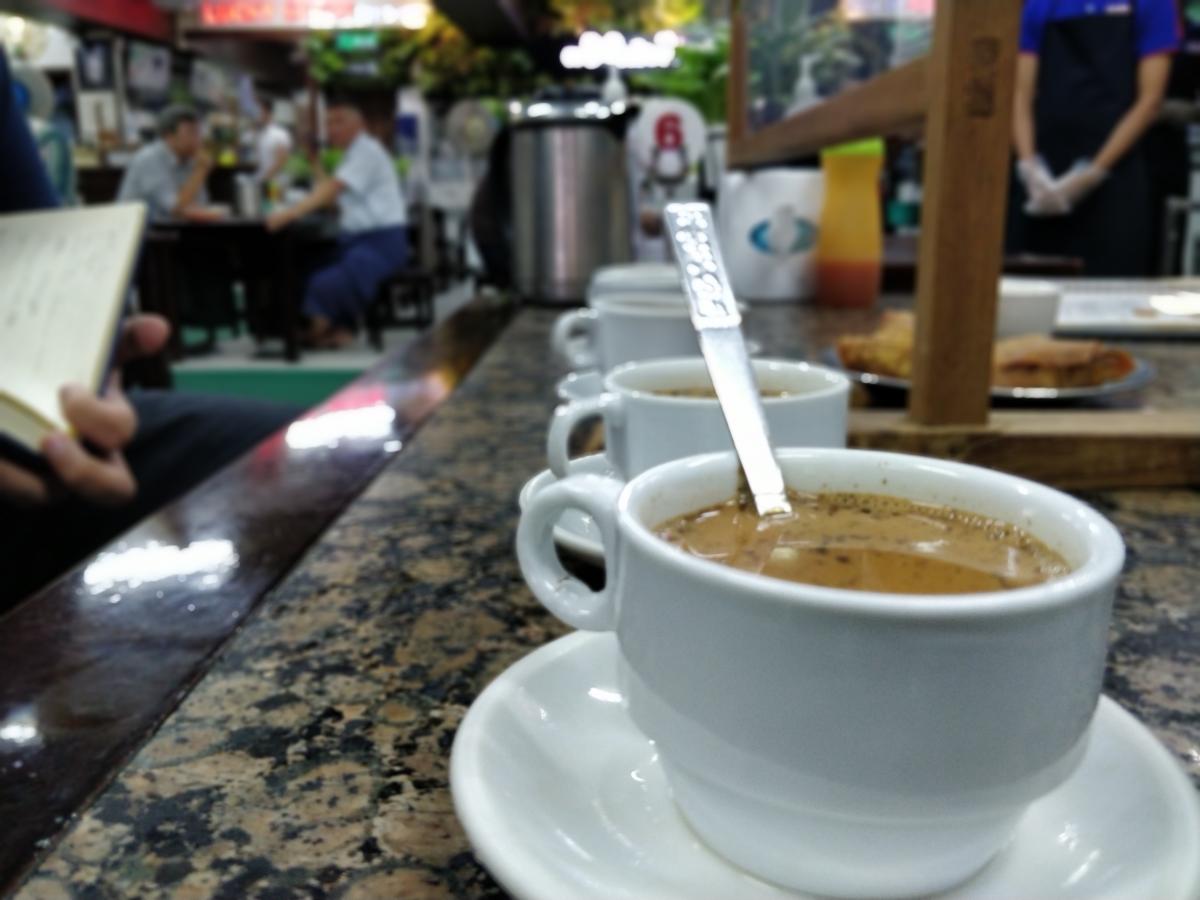
The teashop symbolises many things for the people of Myanmar: the nucleus of the neighbourhood, a gathering point for old-school intellectuals or just a good place to grab a quick bite.
A variety of teashops are sprinkled across the country. Sometimes named under synonyms such as ‘cafe’ or ‘food and drink,’ the settings are largely the same—a chaotic hall where men with longyis rolled up to their thighs squint at newspapers and shout over square tables about last night’s football match.
As the name suggests, people frequent teashops to enjoy Burmese milk tea or laphet-yay and multiple cups of free-flow herbal tea known as yay nway gyan.
Laphet-yay is tea mixed with black tea, evaporated, or non-sweetened, milk and/or sweetened condensed milk. Many teashops, including the establishment we visited for this guide, source their tea from the hills of northern and eastern Shan state. The tealeaves are soaked in boiling water and then strained in a big old tea sock and mixed with a little milk and sweetened condensed milk in jug. This utterly milky and syrupy mixture is then served directly into your little stout teacup.
Those who do not often visit teashops can have trouble ordering their preferred laphet-yay—after all, they all look the same. There are about 20 variations of the brown stuff, which mostly revolve around the terms cho (sweet) kya (lower meaning less sweet, more tea) or (darker) pawt (light), and seint (mild). We tried five of the most popular options because that’s what Lucky Seven Teashop in downtown Yangon offered us.
And without further ado, here is your quintessential Burmese tea guide.
Cho seint (sweet mild)
If the drink you order describes what kind of a person you are, a cup of thick and creamy cho seint means you are probably a toddler or a sugar addict waving around a one-way ticket to diabetes town.
This cuppa hits you like a saccharine bazooka, as the tea makes it way through your system like molten caramel eroding any functioning organ it can find. Why? Because of the heaped teaspoon of sweetened condensed milk dipped in the original tea mixture. Make sure you stir it regularly or the cavity-creating goodness will be left as residue, though it tastes pretty fine if you add some hot water. Cho seint performs best with some naan pyar (naan bread) or some e kyar kway (fried dough sticks).
Pawt seint (light mild)
The coming of age for most Myanmar men is when they move on from cho seint and start ordering pawt seint. A diplomat’s choice for its inoffensive tone, the pawt seint is the original tea mixture but with a few drizzles of evaporated milk, which, by the way, makes all the difference. It’s a light but still creamy experience balanced out by the tanginess of the tea. If you’re a tea noob who clicked on this article to find your ‘spirit tea,’ you can’t go wrong with pawt seint.
Pone mhan (normal)
We’re now starting to see the darker, more sinister side of tea. Pone mhan is what the tea master swirls around with his fancy pours, something like the ‘house tea.’ It’s slightly stronger in terms of tea flavour compared to cho seint and pawt seint—notice how there’s no seint (mild) here. If you’re ordering a pone mhan, chances are you haven’t made up your mind yet or you’re really dreading the teashop atmosphere and just want to get this shit over with. This is totally understandable because inconsiderate spawns of the devil like to smoke wherever and whenever we start to enjoy something in a teashop.
Kya seint (lower mild)
There’s only one type of guy who likes a kya seint: someone going through an existential crisis. The kya seint represents many of our concerns when it comes to finding meaning in life. An earthy water-downed splash of tangy bitterness, the kya seint will make you see the flaws in things—or maybe it’s just the caffeine talking. At this point, the Mix team were three cups deep and eyelids had begun to twitch. If you’re bitter enough to order the kya seint, drink it with an assisting cup of hot herbal tea.
Cho pawt kya (sweet light lower)
Are you on board the cho pawt kya hype train? Middle-aged fathers and edgy hipsters have reserved their seats. A half-and-half of the original tea mixture and more concentrated tea, the cho pawt kya is unexpectedly milder than its cousin, the kya seint. It has a slow numbing flavour of earthy tea bits, but is still tangy and watery. This is a weird one, like the name.
*Disclaimer: These are not the only five teas available in Myanmar teashops, but they should be enough to get you started.



